The water system in the RV is designed so that you can run completely self contained with no connection to the outside world for several days to several weeks depending on how good you are at conserving water.
Fresh Cold Water
Our RV comes with a 65 US gallon fresh water tank. When we are not connected to a water hookup there is a small pressure sensitive electric pump connected to the tank.
When you open a tap, the pressure drops and the pump will come on to try and re-pressurize the lines and this keeps the water flowing. It just so happens that the pump is located right beneath the bed. If you get up in the night to use the facilities, the pump will come on. It is not loud but in the middle of the night it is noticeable.
Some people add what is called an accumulator tank. It is connected via a T off any of the lines. It is just an air filled steel tank. The pump will run and add water to the tank compressing the air. When a tap is opened the compressed air keeps the water pressure up and the pump doesn’t have to run as often.
If the campsite has a water hookup (called city water), you run a hose from the outside tap to an inlet connection in one of the bays. I bought some of the quick-connect connectors so I don’t have to screw them on and off each time. The hose you use must be a special one made just for fresh water. They are made in a way such that you don’t get the rubber taste you normally get from a garden hose.
You can also see that our RV comes with a filter. It is just a particle filter to protect the pump and taps from sand and grit.
At the campsite tap you should always use a pressure regulator. The internal plumbing doesn’t like much more than 40 psi. Some campgrounds can be up to 100 psi. I also attach a Y fitting so that I can still get water from the tap for other things without having to disconnect the RV.
I assume there are some one way valves between the internal tank and the house plumbing and between the city hookup and the plumbing because attaching to the outside water does not fill the tank and the pump does not spray water out the city connection.
The pressure from the water in the city connection keeps the lines pressurized so that the internal pump does not come on. There is a separate switch to enable/disable the pump but I always leave it on.
There is a separate connection used to fill the internal tank. As a rule I keep around 1/3 of a tank of fresh water to be used when we are on the road. If I know we are going to a campground without hookups I will add more depending on how long we will stay. Since a full tank of water weighs about 625 lbs we don’t want to be travelling around with any more weight than necessary.
Fresh Hot Water
The RV comes with a 10 US gallon hot water heater. It can use either 120 V AC electric or propane. This size seems big enough because we have never run out of hot water even with the two of us having showers one right after the other. The water conserving shower head probably has a lot to do with it.
If you use the electric heating element you must always make sure there is water in the tank. Even running a few seconds without water would burn it out. The heater was a rocker switch with a pin in it to lock it off so that you must be very deliberate about turning it on.
That said I only turn it off in the fall when I drain the system because I always make sure the internal fresh tank has enough water to supply it.
We must be connected to an electrical hookup to use the water heater this way. It is not hooked up to the inverter because it would drain the batteries very quickly.
When we don’t have an electrical connection there is a switch by the sink in the kitchen to enable a propane burner to heat up the water. It gets hot in about 15 minutes.
When in electric mode we just leave the heater to cycle on and off and keep the water hot all the time. When running on propane we just turn it on as needed, for example to have a shower. The heater tank must be well insulated because it stays hot a long time even with the heaters are turned off.
Waste Water
Grey water is waste water from the sinks and the shower. Bad but not really bad. Our RV has a 40 US gallon grey water tank.
Black water is the nasty stuff from the toilet. It goes into a separate 40 US gallon tank.
The tanks are connected to the single outside drain via a Y pipe. Each tank has its own knife valve to allow each one to be drained separately.
The drain is connected to the campsite sewer using a flexible hose with a bayonet connection on the RV side and a screw in L connection on the campground side. I have 2 10 foot sections of hose that can be connected together in case the sewer is far away.
Since the campground connection can be at different heights I have a slinky like support for the hose to always try and make sure it runs downhill.
Even though the adaptor at the campground side can usually screw into their sewer pipe it is always a good idea to put something heavy on top. You NEVER want this one to pop loose.
As gross as it sounds, it is a good idea that the adaptor from the hose to the RV drain pipe be clear. This way you can see when the tanks have finished draining rather than trying to hear it.
The reason that there are separate black and grey water tanks is that when you are connected to the campground sewer you normally leave the grey tank valve open so that it drain out immediately. In this way high volume things like the shower don’t run the risk of filling the tank.
You should NEVER leave the black tank valve open. In order for the solid material to flush through the hose properly it needs a sufficient amount of liquid to keep it moving. It used to be said that you should never drain the black tank unless it was at least 3/4 full in order to get enough flow. These day ours and most RV now have sprayers inside the black tank. You connect a hose (not your fresh water hose) to the sprayer inlet and jets of water spray inside the tank to help clean it out. I also try to close the grey tank valve the day before I dump the black tank so I have some nicer water to clear out the hose.
One time after I drained the tank I did leave the black tank valve open. Guess what I saw in that clear piece of pipe when I went back to drain it again before we left a campground. Even worse when I turned on the tank sprayer nothing came down the pipe so it was completely clogged. Thankfully I had some water in the grey tank. I closed the black valve and opened the grey valve to clear the hose. I used the sprayer inlet to add a lot of water to the black tank and then, from a trick I learned from the internet, I dumped a bag of ice cubes down the toilet. Driving to the next campground they bounce around and scrape things clean. Then they melt so they flush easily. You can imagine my relief when the tank flushed properly when we got to the next site.
Once you have emptied the black tank you should add about 5 gallons of water so that the material you eventually add does not build up in a pile in the tank but gets a chance to dissolve.
Many campground do not have sewer hookups at each site so that when you leave the campground you empty your tanks at a dump station. The procedure I use to dump the tanks is to start the black tank sprayer, open the black valve, watch until the water clears and you see the water from the sprayer and it is also relatively clear. Close the black valve and use the sprayer to add some water to the black tank. Then open the grey tank to flush the hose. Disconnect the hose from the RV end and use a water hose to spray down the sewer hose to really clean it out as much as possible.
I store the sewer hose, its support and the water hose for the tank sprayer in a separate bay from the fresh water connections so as not to contaminate anything.
If you are camping without a sewer connection normally the grey tank will fill up much faster than the black tank because the toilet does not use much water to flush. Although some people think it is wrong, in our RV the washroom sink also drains into the black tank. I think it is good because it allows us to more easily balance the filling of each of the tanks.
Note that the grey and black tanks are vented out the roof of the RV. Some people add chemicals to their tanks to get things to breakdown faster and to prevent odours from entering the washroom. We have never had a problem so I don’t bother.
Another important note. You should really only use toilet paper designed for RV use. It is made to dissolve very quickly in water to try and not gum up the tank. Unfortunately, this means it is usually 1 ply or very thin 2 ply and you really should try to use as little as possible. It is not one of the more fun sides of being in the RV.
Gauges
There is a panel in the kitchen that is supposed to tell you the level of material in each tank. They are totally useless. They just have lights for full, 2/3, 1/3 and empty.
You can see the sensors in red on the fresh tank in the picture.
When they are under water they conduct and the appropriate light on the panel goes on. However, for example if the fresh tank is under 1/3 full you don’t know if you have 19 gallons left or 0 gallons left. I always just have to go to the bay and look at the tank.
The ones on the black tank don’t work at all. They just always say full even if I have just emptied the tanks. I imagine some of the toilet paper and “material” is just caked on them.
Fortunately for cosmetics, unfortunately for usefulness, the grey and black tanks are made of an opaque black plastic. I just have to guess based on our usage as to how full they are.
There are after market sensors you can buy. Some just replace the ones I have and claim not to gunk up. There are fancier ones you apply as a strip to the side and they somehow sense and give a continuous reading of the water level from the outside.
I almost bought these but I have several problems. First, they expect the tanks to be rectangular so that the fill level is linear. My fresh tank is L shaped as you can tell from the positioning of the current level sensors. My black and grey tanks are short of mushroom shaped as they rest on a rectangular metal bracket all the way around. Second the sensors must be stuck to the side of the tank at least 1” from any metal. The metal supports all the way around rule this out.
So I am stuck with guessing.
Cold Weather Usage
If the temperature goes below zero of a length of time you should not leave any water or sewer hoses outside the RV. I just run on the internal tanks and fill/dump periodically.
The bays that the tanks are in also are wrapped in foil insulation and our RV has an optional system of heating pads on each tank. One is the black pad on the picture below.
If the temperature goes below 4C in the bay, the pads which are 12V heaters will turn on. I am not sure how quickly they would kill the batteries because so far I have only used them when we are connected to shore power.
Most of the pipes are inside the RV so they are kept warm in the same way we are.
We have been out in quite a few below zero nights but never where the days are also below zero. I am not sure I would want to be.
Winterizing
To winterize the RV you must make sure that all the water is out of the system.
- Make sure the black and grey tanks are empty.
- Make sure that the electric water heater is turned off.
- Open the low point drain to drain the fresh water tank and lines as much as possible.
- Remove the anode from the water heater to allow it to drain.
- Drain the main water filter and the small one by the pump.
- To really clear the lines some people use the pump to suck up RV anti freeze until it comes out all the taps and toilet.
- I have an attachment to my air compressor. I just blow 40 psi air through both the tank fill and city inlet valves and then go from outlet to outlet (hot and cold taps, shower, toilet) until only air and no water comes out.
- Pour some RV anti freeze down the toilet and sink drain such that it gets into the tanks and sits around their drain valves.
- Pour some antifreeze into the sink and shower drains to fill their P traps.
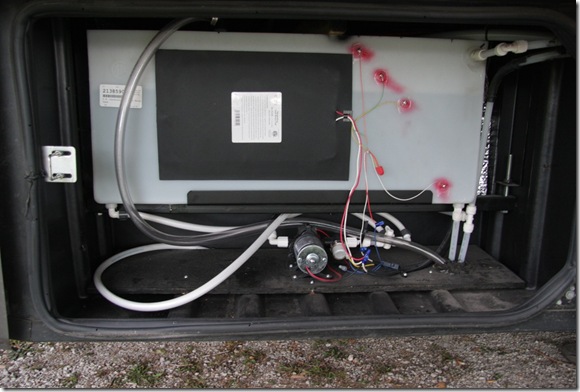
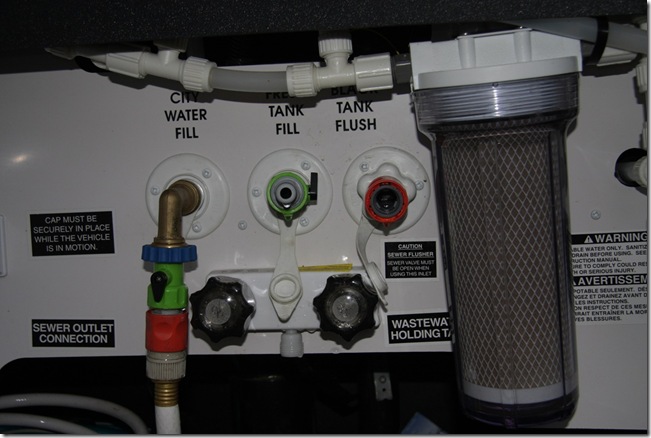



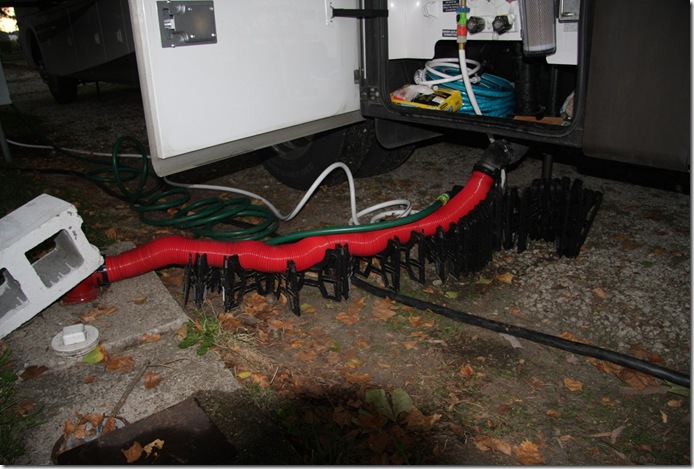
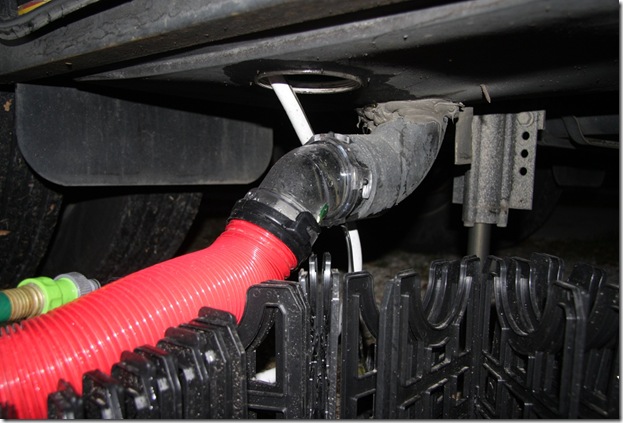
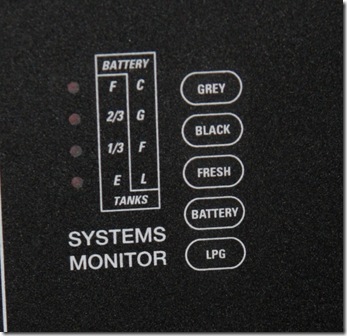
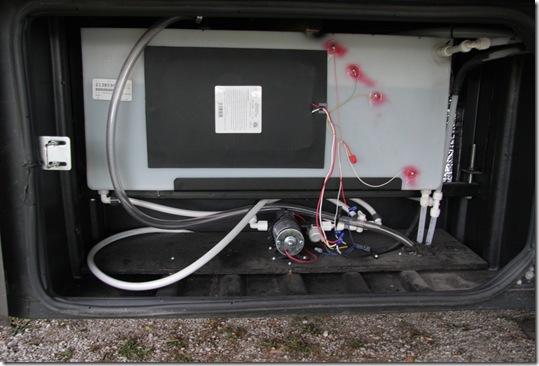
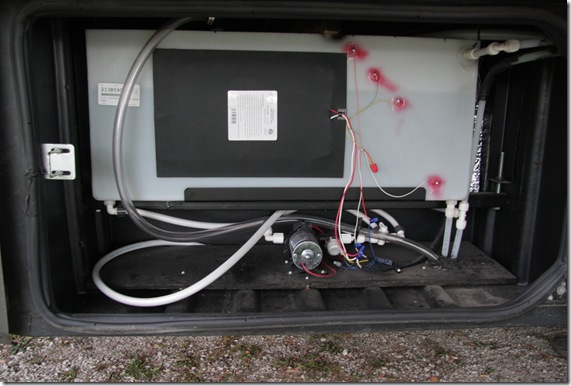
No comments:
Post a Comment